Eastern Georgia – Site of the Iberia kingdom, were among the first nations in the region to adopt Christianity (in AD 337). The wealth of history is wordlessly shown by the numerous monuments: religious buildings of the early Christianity – ancient churches and monasteries, lost in the Caucasus mountains.
Day 1. Arrival
Arrival at the Tbilisi International Airport. Transfer to the hotel. Time at leisure.
Walk along Rustaveli Avenue. In order to learn more about Tbilisi and be able to touch its traditions, you need to take a walk along Shota Rustaveli Avenue. The length of the avenue is only one and a half kilometers, so a walk along it will not be tiring. A variety of stories – from comical to tragic – are associated with almost every house on Rustaveli.
The avenue is a combination of old and modern buildings, art galleries, exhibition halls, theatres, malls, cafes, restaurants and gift shops. Shady plane trees, monuments to prominent Georgians, front facades with stucco, bronze men, streets running up – all this is the central Rustaveli Avenue. In the evening, the original lighting turns on and the avenue becomes even more beautiful.
Overnight in Tbilisi
Day 2.Tbilisi - Ananuri - Gudauri - Sno - Kazbegi= Tbilisi
Mtskheta-Mtianeti – one of the most picturesque and diverse places in Georgia. Here are the snowy peaks of the Greater Caucasus with a height of 3500 and 5000 m, mountain passes, beautiful gorges, secluded lakes and alpine valleys. It is full of ancient architectural masterpieces and the legendary Georgian Military Road, one of the most beautiful roads on earth.
Visiting the Ananuri castle, which beautifully rises above the Zhinvali reservoir. The stone fortress walls with the main quadrangular tower and round towers, two domed temples, a tower with a pyramidal roof, a belfry and some other buildings have survived to this day. The fortress belongs to the early feudal era and served as a defense outpost, blocking the road leading from the Darial Gorge. At present, Ananuri is one of the best preserved historical and cultural monuments. Ananuri Castle is among the candidates for inclusion in the UNESCO World Heritage List.
Visit to the Gudauri ski resort. On the southern slopes of the Greater Caucasus Range, at an altitude of more than two kilometers, there is an amazing corner of the Caucasus – a modern and actively developing ski resort Gudauri. Thanks to the luxurious snowy expanses of the Cross Pass, leading from the valley of the Terga River to the valley of the Aragvi River, and the magnificent sunny weather throughout the skiing season. At the service of athletes there are routes of all categories of difficulty – from “green” slopes, suitable even for beginner skiers and snowboarders, and ending with “black” slopes of a high level of complexity.
Visiting the Sno Fortress. The builder of this fortress is not known. This fortress is often called the Gudushauri fortress. The fortress has an almost round fence and one tower. It is located on the north side in a high place. The fortress fence is complex, it consists of many protective elements. The only entrance to the fortress is from the east. The tower served for observation and for combat operations. The only way to get into the tower was by a ladder. The village of Sno is famous for the fact that Patriarch Ilia II was born here. In the courtyard of the residence of the Patriarch there is a functioning church.
Visit to the Church of the Holy Trinity (Gergeti Trinity). One of the symbols of Christian Georgia, built in the XIV century. The Gergeti Trinity strikes the imagination both with its severe charm and wild beauty of this place. It stands literally above the clouds – the height above sea level is 2170 meters. For a long time, one of the most sacred relics of Georgian Christians, the Cross of St. Nino, lay here, the honor of which he shared with Svetitskhoveli and Tbilisi Sioni. The church was built against the backdrop of the eternal glaciers of Kazbegi – the same mountain from ancient Greek myths, where the gods chained Prometheus for stealing fire for peop
Overnight in Tbilisi
Day 3. Tbilisi - Bolnisi - Dmanisi - Tbilisi
The region of Kvemo Kartli was formerly known as Trialeti. This region of Georgia is inextricably linked not only with the history of the country since ancient times, but also with the history of all mankind.
It was here that during the excavations the five oldest hominid skeletons in Europe were discovered, attributed to the species Homo Georgicus, about 1,800,000 years old, it was here that the remains of clay vessels with seeds of cultivated grapes dating back to the 6th millennium BC were found, which allowed scientists to talk about Georgia as the birthplace of winemaking.
Visiting the Tsurtavi Fortress. Tsurtavi is one of the last fortresses of this type, which was built in the kingdom of Kartli-Kakheti. The area of the fortress is 2 thousand square meters. The height of the walls is 6 meters. There are towers at the corners of the fortress. Another tower stands in the center of the eastern and western walls. The first of them is the main entrance to the fortress. On the facade you can see a bas-relief depicting chained lions. All towers are equipped with loopholes, embrasures for stones and cannon vents. To date, on the territory of the fortress, there is a functioning convent named after the Holy Great Martyr Queen Ketevan.
Visit to the Church of Saints Peter and Paul and the monastery complex. The church was built on the top of Mount Elia, at an altitude of 820 meters above sea level, from where the most beautiful places of the area open up. This place is rich in history. Since ancient times, there was a small church in the name of the apostles Peter and Paul. Stone terraces on the mountain, where vineyards have been planted and vines of various varieties have been grafted, are simply mesmerizing and every tourist will want to see this with their own eyes. These terraced vineyards have no analogues in the country. The monastery has its own cellar, because monastery winemaking occupies a special place in the history of Georgia.
Visit to the Sioni of Bolnisi. A similar type of temples in Georgia began to be erected by the end of the 5th century. Bolnisi Sioni is the very first basilica built in Georgia and still preserved. Surprisingly, today the temple has reached almost unchanged. The construction of Sioni coincides with the reign of the legendary king Vakhtang Gorgasali. The significance of the temple and its influence on the culture of Georgia is great. Firstly, the Bolnian basilica is the oldest in the country. And, secondly, there are inscriptions on the facade of the temple, which are the first examples of Georgian Asomtavruli writing. On the eastern façade of the basilica there is a cross – later called the Bolnisi Cross – which is depicted on the modern flag of Georgia.
Visiting the city of Bolnisi – city with different names: Katarinenfeld, Luxembourg and currently – Bolnisi. In past centuries, there were German villages in the Kvemo Kartli region. The German history of Bolnisi began in 1818 when the Germans were evacuated from Swabia. The German settlement was originally called Katarinenfeld. At that time, the city had a clear linear layout, and the main street was called Tifliser Strasse. In the center was a crossroads, from which a Lutheran church stood to the south. The houses have an unusual shape, which is not typical for the architecture of Georgia.
Visit to the medieval fortress of Kveshi – built between the 7th – 9th centuries, on a low accessible rock. The fortress of Kveshi represented the royal and princely residence. Until the end of the 18th century, it served as one of the main outposts to deter enemy forces penetrating this region from the south. An important trade route has passed through here for centuries. The fortress is special in that it was a kind of meeting point between Western and Eastern cultures. The surrounding area offers a beautiful view.
Visit to the hillfort of Dmanisi, the most important cultural monument in the Kvemo Kartli region. People settled here as early as the early Bronze Age – around 3000 BC. During archaeological excavations, the remains of an ancient man were found. The analysis proved that fragments of the jaw and skull belong to Homo erectus, and their age reaches 1.8 million years. Further, many more fragments were discovered and scientists managed to reconstruct the appearance of the so-called Dmanisi Homo georgicus.
Sioni of Dmanisi is located on the territory of the ancient city – one of the 5 Zion temples in Georgia (VI-VII centuries), in which fragments of ancient paintings have been preserved. In the upper part of the Settlement there is an ancient fortress. These are the ruins of a once grandiose structure. The ruins of three towers have also been preserved, all of them facing south. The most important defense of the fortress is its location. It rises on a high hill, and there are gorges on both sides, which made it almost impregnable and protected the city from invaders.
Overnight in Tbilisi
Day 4. Tbilisi - Ujarma - Shuamta - Ikalto - Tsinandali - Telavi
Kakheti – the most beautiful region of Georgia, is becoming more and more popular every year among travelers from all over the world. Numerous vineyards and, accordingly, excellent Georgian wines, natural and historical and architectural sites, many shrines – these are the main reasons why you should pay attention to Kakheti, a region with a rich history and, of course, delicious Georgian cuisine.
Departure to Kakheti through the Gombori pass. In order to enjoy nature, you just need to go along this road and watch how the road, like spilled wine, winds between the mountains. Watch mountain snow-covered ridges, low-lying vegetation along a hilly road, winding streams. At the same time, behind each next turn, the view will be completely new, fundamentally different from the previous ones.
Visit to the Fortress of Ujarma – historical fortified city and one of the most important monuments of medieval architecture in Georgia, due to its location and historical significance. St. Nino placed one of the three crosses here, symbolizing the Christianization of Georgia. Under King Vakhtang Gorgasali, a palace was built here, and his residence became the de facto capital of Kakheti. The panorama that opens from the upper part of the fortress to the Iori River, the Gombori Range and the surrounding nature is simply mesmerizing. On the territory there are buildings belonging to different eras: a temple, a cross, towers, a water collector, marani, ruins of walls and other objects.
Visiting the monasteries Dzveli-Shuamta and Akhali Shuamta (Old Shuamta and New Shuamta). There are two monasteries in the village of Shuamta, which at one time were important religious centers of Christian Georgia. The monasteries were built in different eras and differ in the style of the structure. Dzveli or Old Shuamta consists of several temples built in the 5th-7th centuries. The very first of them is a small church in the foreground. The current nunnery – Akhali or New Shuamta was built later, in the 16th century. The monastery complex consists of the Church of the Virgin, the bell tower and outbuildings.
Visit to the medieval academy of Ikalto. Currently, the complex has a functioning church, where the relics of its founder, Zenon Ikaltoeli, are exhibited for worship. As well as in Gelati, the monastery had its own academy built in the XII century by King David IV and was one of the cultural centers of Georgia. The famous philosopher Arsen Ikaltoeli taught there, one of whose students was the great poet Shota Rustaveli. The majestic temple has the oldest wine cellar in Georgia.
Visit of Telavi. The city has been known since the 1st-2nd centuries AD. e., and for a long time was an important trading center on the caravan route from the Middle East to Europe. Telavi is not only the center of the region. This is the center of all Georgian winemaking, which, as you know, is elevated to a cult here. The landscapes of Telavi and its environs are very impressive. Here you can simultaneously enjoy the greenery of the river valleys, the slopes of the mountains of the Greater Caucasus, crowned with thousand-meter peaks, its slopes, overgrown with hornbeam and oak forests, turning into alpine meadows.
Visit to the Residence of King Erekle II. The house-museum of Erekle II in the castle of Batonis-Tsikhe is located in the center of the city of Telavi, which served as the residence of the kings of Kakheti in the 17th-18th centuries. The castle includes two churches, the ruins of the royal baths of the XI century, the pantheon and the palace of Heraclius II. Today there is a house-museum of Erekle II, an ethnographic museum and an art gallery. In the museum you can see numismatic collections, an early medieval sarcophagus, late medieval weapons and a collection of copper household items from the 18th-18th centuries.
Visit to the house-museum of A. Chavchavadze in Tsinandali, largely symbolic place. The current Tsinandali Palace was built in the early 1800s by the famous Georgian poet and thinker Alexander Chavchavadze. He often hosted guests (Griboyedov, Pushkin, Lermontov and Alexander Dumas Sr. were here), entertained them with music, witty conversation and, in particular, fine wines produced in his manor marani (winery). Now the estate houses a museum with well-preserved interiors and artifacts from a bygone era. Around the elegant mansion was laid out a regular park in the English style with various rare plants.
Visit of Winery “Shumi”. The winery of the company is located in Tsinandali. The plant is equipped with the most modern equipment that allows you to control all stages of the wine production process, making it possible to guarantee the stability of product quality. The Schumi company has created its own museum of vines and wine “Vazioni”. There are collected 294 names of Georgian grapes and 92 foreign varieties. The museum also contains ancient wine-making equipment found during archaeological excavations. The museum
Overnight in Telavi
Day 5. Telavi - Gremi - Nekresi - Kvareli - Telavi
Visiting to the architectural ensemble of Gremi – Gremi strikes the imagination with its size, as well as the amazing insight of its architects. The castle is considered the pearl of the wine region of Kakheti and it is no coincidence that it is listed as the point of every sightseeing trip around the region. Gremi is an architectural ensemble and consists of the Church of the Archangels Michael and Gabriel, a bell tower, a three-story palace and a wine cellar (marani). The complex is surrounded by a wall with towers and embrasures, where the remains of a secret underground passage leading to the river are still preserved. This is all that remains of the once flourishing ancient capital of Kakheti.
Visit to the Nekresi Monastery – ancient monastery complex in Kakheti, located in a picturesque place, right on top of a mountain, offering a breathtaking view of the Alazani Valley. Many centuries ago, there was once the town of the same name Nekresi, the ruins of which can be seen from the height of the monastery. The general view of the church and the interior decoration are quite ascetic. The monastery complex combines several monuments of Georgian architecture, among them there are three temple buildings. In addition to spreading the faith and teachings of Christ, the monastery was an important scientific and educational center of the region.
Lake Ilya is a real gem of Kakheti, framed by picturesque mountain ranges. Great place to stay for many locals and travelers coming to Georgia. Surrounded by a beautiful forest with a lake in the middle, the resort is the perfect place to unwind after a trip. Lake Ilya is perfectly equipped for visitors – there is both an entertainment complex and a restaurant that offers a magnificent view of the city. The lake is located at an altitude of about 500 meters above sea level, 200 meters above the altitude of the adjacent Alazani valley. To the right and left of the lake there are wooded mountains with a height of about 700 meters. In summer, you can swim.
Visit to the House-Museum of Ilya Chavchavadze in Kvareli. The museum of the great Georgian writer, public figure and poet is located in the family estate of Chavchavadze. The museum complex includes a family tower, a residential building and an exhibition hall. The museum contains memorial items of Ilya and his family members. A very interesting building in terms of architecture and a very beautiful garden inside. Well organized tour with pleasant musical accompaniment. There are many interesting stories not only about the life of Ilya Chvchavadze himself, but also about the history of Georgia.
Visit to the winery “Kindzmarauli”. The plant is the main producer of the famous brand of wine. The company owns three-quarters of the vineyards of the Kindzmarauli microzone, several wine storages and wine shops, a restaurant and a tasting room on the territory of the plant. Kindzmarauli wine ferments naturally, but the process is interrupted before it is completed by cooling the juice containers. Therefore, it retains the natural sweetness and aroma of Saperavi grapes, unlike other semi-sweet wines where sugar is added. The program includes wine tasting.
Visit to the Khareba Winery. The winery is known to many thanks to its unique wine cellar in Kvareli, which is cut right into the rocks of the Caucasus Range. The constant temperature throughout the year is between 12 and 14 degrees, which is the ideal condition for wine that is stored in oak barrels, as well as for already bottled wine. The total length of the cut tunnels is more than 7 kilometers. There is also a museum sector here – this is a real marani with clay kvevri. Here you can taste the brightest varieties of Georgian wines, the famous Georgian chacha and the famous cognac.
Overnight in Telavi
Day 6. Telavi - Bodbe - Signagi - David Gareja - Tbilisi
Visit to the Bodbe monastery. The monastery embodied ascetic rigor and religious grandeur. It is here that the relics of St. Nino, who is considered the Enlightener of the Georgian people, are currently stored. Inside the temple there is another shrine – the Iviron Icon of the Mother of God. The icon of the Iviron Mother of God streamed myrrh several times. Every year many believers come to worship the miraculous image. The most important attraction of Bodbe is the Spring of St. Nino. A small temple was built above the spring in honor of Zabulon and Sosana (Nino’s parents), and below there is a spring and a font.
Visit to Sighnaghi – beautiful and comfortable town on a mountainside. Over the past ten years, the city has been gradually restored and is the center of tourism in Georgia. The city is picturesque, bright and tasteful, this is the result of the excellent work of engineers and designers. The buildings are built in the style of southern Italian classicism with Georgian elements. This is a place of diverse entertainment for every taste. The city has all the conditions for a great holiday. The city is famous for the fortress of the same name, which is included in the list of the most famous and largest fortresses in Georgia. Along the perimeter of the walls, 28 watchtowers have been preserved, from which a wonderful view of the Alazani Valley opens.
Visit to the Local Lore Museum. It can rightly be considered one of the best local history museums in Georgia. The museum consists of two floors. The first one is devoted to archeology, here you can see ceramics of different centuries, bronze crafts, daggers, dishes. All exhibits are signed, and there are also stands with more detailed information. A large collection, including from small, no longer existing museums in the Kakheti region. The second floor is more dedicated to painting. The hall of paintings by the artist Lado Gudiashvili and the hall of the artist Niko Pirosmani.
Departure to the complex of cave monasteries – David Gareja. The foundations of the monastery complex were laid in the first half of the 6th century by the Assyrian monk David. Together with his disciple, he settled in a small cave in the middle of the Gareja desert and soon founded the first monastery there – the Lavra of David. Over time, the old hermit had followers and after a few centuries there were about 12 cave monasteries in the complex. Churches and refectories were built on their territory, and monks lived in cells carved into sandstone rocks.
Currently, the complex consists of about 20 monasteries carved into the rocks. The main monastery is the Lavra of St. David, which is located on the northern slope of the mountain separating Georgia and Azerbaijan. Two of the 20 caves contain still functioning monasteries. David Gareja occupies a special place in Georgian history and is one of the main attractions of Georgia. According to National Geographic magazine, David Gareja monastery complex is one of the wildest and most beautiful places in the world.
Overnigt in Tbilisi
Day 7. TBilisi - Gori - Uplistsikhe - Borjomi - Akhaltsikhe
Kartli is one of the main historical and geographical regions of Georgia, the cradle of its statehood. The largest and most populated province in Eastern Georgia. In the IV-III centuries. BC e. the kingdom of Kartli was formed with the capital Mtskheta. The ancient eastern Georgian kingdom of Kartli, also known as Iberia, adopted Christianity as its official religion in 337 AD.
Drive to Gori. The Gori fortress in the hilltop. The territory of Gori has been populated since the early Bronze Age. According to the medieval Georgian chronicles, the town of Gori was founded by King David IV (r. 1089-1125) who settled refugees from Armenia there. However, the fortress of Gori (Goris-Tsikhe) appears to have been in use already in the 7th century, and archaeological evidence indicates the existence of an urban community in Classical Antiquity.
Visit to the house-museum of Joseph Stalin. The exposition contains many things that actually or supposedly belong to Stalin, including some of the furniture from his offices, and gifts. The display of the exposition ends with one of the twelve copies of Stalin’s death mask. In front of the main museum is the house where Stalin was born and spent the first four years of his life. The museum presents Stalin’s personal railway car. The car has been used by him since 1941, including for trips to the Tehran and Yalta conferences.
Departure to the cave city of Uplistsikhe. Even from afar, this quaint rock city fascinates with its unusual view. Cave grottoes gape like giant pores on the rocks, inside of which life once boiled. There were once huge majestic halls, temples, dwellings, interconnected by winding corridors. It is hard to believe that this grandiose titanic work to create a whole city from the stone firmament is the creation of human hands. Once on the territory of Uplistsikhe there were about 700 caves and similar structures, and today there are about 150 of them.
Departure for Borjomi. Modern Borjomi is one of the popular resorts in Georgia, which is suitable for ecotourism and family holidays. Its convenient location in the beautiful mountains of the Lesser Caucasus attracts many tourists all year round with its landscapes, the opportunity to relax and improve your health. There are dozens of mineral springs in Borjomi. The main mineral spring is located in the Central Park of Borjomi.
Visit to the city park Borjomi. Borjomi Central Park is a well-groomed place with a lot of vegetation, clean air, which is considered healing here, and a pleasant atmosphere where residents and guests of the city like to relax. Central Park gained its fame thanks to the city’s main hot spring of mineral water, which anyone can try for free. The source is located in the park in a beautiful blue pavilion with a dome with a glass roof. The main alley of the Central Park stretches along the Borjomula River passing here, over which bridges are installed, the length of the park itself is about a kilometer.
Visit to the pools of natural mineral water. The sulfur pools of Borjomi are located three kilometers from the entrance to the city park. The hot tubs themselves are three pools. All the water that enters the tanks comes from large taps, it is cloudy and has a somewhat specific smell, nevertheless, water procedures in the hot spring give vigor, and as a bonus, a walk in the pine forest. Next to the sulfur baths there are benches, showers and a cafe.
Overnight in Akhaltsikhe
Day 8. Akhaltsikhe - Xertvisi - Vardzia - Tbilisi
Samtskhe-Javakheti. One of the most colorful regions of Georgia, carefully preserving its rich historical past, architectural monuments, culture and centuries-old traditions. Following the history of Georgia, the Samtskhe-Javakheti region was one of the most important and culturally advanced provinces.
Akhaltsikhe, located on the banks of the Potskhovi River, at an altitude of 1000 m above sea level. Even the name of the city speaks of its military past: Akhaltsikhe means “New Fortress” in Georgian, and the recently restored Rabati Fortress is evidence of this. Built in the 13th century, this military building has seen a lot in its lifetime. The fortress was repeatedly destroyed, often under siege, and eventually absorbed traces of various cultures and religions.
Visiting The fortress of Khertvisi, one of the ancient fortresses of Georgia. The location of the fortress is dictated by trade and military interests, for centuries along the Kura River there was a trade route from the Middle East to the northern regions. Judging by the ancient chronicles, Khertvisi is one of the first settlements on the territory of Georgia, which arose in ancient times, but was destroyed after the arrival of Alexander the Great. The picturesque place in which it is located makes this place even more attractive for tourists and travelers.
Visit to the cave city of Vardzia. The rock city consists of about 600 caves of natural and artificial origin and stretches along the river for about a kilometer. During the reign of Queen Tamara, the arrangement of Vardzia as a fortress city was approached on a state scale: many caves were expanded and landscaped, the Assumption Church was built, which later grew into the famous Vardzia rock monastery. Within twenty years, a dozen more churches, a library, baths were built in the cave city, a sewerage system was laid and secret passages were lengthened. Currently, some caves go deep into the rocks for tens of meters, and the city of Vardzia has eight “floors” in height.
Visit to the Romanov Palace in Likani. The building is made in an exotic Moorish style, which is distinguished by oriental motifs, rich decorations and the difference of each of the facades. The palace was an important building, for its functioning, the first hydroelectric power station in the entire Russian Empire was built on the Kura River. The palace was built specifically for the hot and humid climate of Georgia – inside it is invariably cool and dry. After the overthrow of the autocracy, the palace in Likani continued to serve as the summer home of the ruling elite. Sometimes Joseph Stalin spent summer evenings here.
Visit to the Green Monastery. Monastery Located in the heart of a deciduous forest. To this day, there is a monastery where the monks pray for the well-being of the country and the people. The monastery was built by the disciples of the famous Georgian figure Grigol Khandzteli – Christopher and Theodore. It consists of three basilica churches and a bell tower, where the ornaments of Georgian architecture are well read.
Overnight in Tbilisi
Day 9. Tbilisi - Mtskheta - Tbilisi
Departure to Mtskheta. The oldest city-reserve, whose age is about 4000 years, is considered the Second Jerusalem, a museum of Christian culture. In a small area between small streets, it keeps a lot of saints and places of worship. Mtskheta is actually the heart of Georgian civilization, the capital of Georgia before the founding of Tbilisi.
Visit to the Jvari monastery – Georgian monastery and temple of the 7th century, one of the masterpieces of architecture for the perfection of architectural forms and the first World Heritage Site in Georgia. Jvari (lit. “cross”) is located on the top of a mountain at the confluence of the Kura and Aragvi near Mtskheta – where, according to historical sources (“Conversion of Georgia”, “Life of the Kartli kings”), St. Nino erected a cross. Jvari Monastery is included in the UNESCO World Heritage List.
Visit of Svetitskhoveli – The temple, with some changes that has survived to this day, was built at the beginning of the 11th century. It is one of the greatest cathedrals. The ancient shrine and spiritual center of Georgia was built on the site of previous churches, the walls of which were not completely destroyed and were preserved as architectural elements. Svetitskhoveli keeps the most important Orthodox relics: the chiton of the Lord, the font of King Mirian, a particle of the relics of the Apostle Andrew the First-Called, the robe of the prophet Elia, the relics of the holy Georgian kings. Svetitskhoveli Temple is included in the UNESCO World Heritage List.
Visit of Samtavro Monastery. The history of the monastery begins in the 4th century and is associated with St. Nino, one of the most revered saints in Georgia. After arriving in Mtskheta, St. Equal-to-the-Apostles Nino found a secluded place near the northern border of Mtskheta, where she settled in a hut in blackberry bushes (which has survived to this day) and continued her sermon. Samtavro is especially revered by believers, since there are Christian shrines here – The icon of the Iviron Mother of God , the relics of King Mirian and Queen Nana, the relics of St. Shio Mgvimeli and of St. Gabriel Urgebadze. Samtavro Monastery is included in the UNESCO World Heritage List.
Visiting the Shio-Mgvime Monastery – ancient monastery founded in the 6th century by the monk Shio, who spent his last years in a deep cave located on the territory of the monastery. Where did the name of the monastery come from – “Shio-Mgvime”, which in Georgian means “Cave of Shio”. The first building was the Church of St. John the Baptist. The monastery quickly became the largest monastic community; by the end of the 6th century, it had about 2,000 monks in its ranks. The monastery was repeatedly devastated and destroyed. At the end of the 19th century, Shio-Mgvime was completely renovated. Now it is active and still attracts pilgrims.
Departure for “Chateau Mukhrani“. “Mukhrani” in Georgian means “decorated with oak trees”. This is not only one of the most picturesque places in Eastern Georgia, but also a territory with healthy soil and harmonious climate. Masters of Chateau take the authenticity of the region as a basis and strive to emphasize the terroir and character of the unique Georgian grape varieties. Chateau vineyards are located in specially selected areas of the region. The fabulous palace and wine cellars, beautiful gardens and vineyards brought Chateau Mukhrani worldwide fame.
Overnight in Tbilisi
Day 10. Tbilisi
Transfer for Europe Square (Rike Square), which is located in the heart of the Old City. At present, the city is a quiet charm of the crooked, sun-drenched streets of Tbilisi, the terraces of houses twined with vines, ancient churches with tiled domes, the ruins of ancient monasteries, traditional Georgian courtyards with bizarre carved verandas – it is impossible to resist this landscape.
Visit to the Sameba Cathedral – the Temple was really built on a grandiose scale, its sparkling golden dome can be seen from almost anywhere in Tbilisi. The temple is part of a whole complex, which also includes the residence of the Patriarch and the monastery, theological seminary and academy, a hotel; as well as a complex of nine chapels, five of which are located underground.
Visit to the Metekhi Temple. On the elevated rocky bank of the Kura River stands a majestic witness to the long and exciting history of Tbilisi – the Metekhi temple. Once upon a time there was a palace of local kings, which, according to historians, was erected by the founder of the city, Vakhtang Gorgasali. There is a beautiful observation platform from which you can admire the Old Town lying opposite across the Kura.
Visiting the Narikala fortress, which is the most ancient monument, a kind of “soul and heart of the city”. The date of construction of the fortress is called approximately the 4th century AD, that is, it stands, in fact, from the foundation of the city itself. In the future, the fortress was expanded and completed several times.
Visiting the Tbilisi sulfur baths, built in the style of classical oriental architecture. These are low, squat buildings, topped with semicircular domes with large glass openings in the center, which served as windows that illuminate the interior, since the baths themselves are below ground level.
Legvtakhevi is located in the center of old Tbilisi, behind the sulfur baths. This part of old Tbilisi is distinguished by individual landscape architecture, at the same time it is characterized by a significant architectural, historical and cultural heritage. There is also the central entrance to the Tbilisi Botanical Garden. From the high observation deck, located at the entrance to the garden, you can see the Legvtakhevi gorge, into which a 20-meter waterfall falls from a ledge of a rock.
Visit to the Sioni Cathedral – historically the main temple of Tbilisi, named after Mount Zion and consecrated in honor of the Assumption of the Blessed Virgin Mary. It is located on the banks of the Kura River in Old Tbilisi. Some hierarchs of the Georgian Church are buried in the cathedral, and its main relic is the ancient cross of St. Nino, who brought Christianity to Georgia.
Visiting the Tbilisi Sea and the majestic Monument “History of Georgia“, which is simply amazing. On one of the city hills, which offers a beautiful view of the Tbilisi Sea, a unique composition of twelve sculptures of Georgian kings, a church and stairs with arches, balustrades and viewing platforms has been created.
Visiting the mount Mtatsminda. One of the mountains around Tbilisi, called the “Holy Mountain” by analogy with the Holy Mountain of Athos. The funicular is a railway, a 500-meter road allows you to get out in the middle of the mountain, where you can visit the Pantheon of writers and public figures of Georgia, as well as climb to the Mtatsminda Amusement Park itself and enjoy the majestic panoramic views of the city.
Overnight in Tbilisi
Day 11.Departure.
Walk around the city.
Transfer to the airport.
The price for one person $ (US Dollars)
From 55 USD
The price depends on the number of people and varies(±) from 55 USD for one day.
Price Includes: Transport, Accommodation, Service of guide.
The cost of each excursion is discussed individually.
For more information, do not hesitate to call or write Viber / WhatsApp +995 599 25 65 19 or in mail : info@georgiavoyage.ge
*Timetables : on request
| Nomber of persons | 1-3 per | 4-8 per | 9-19 per | 20-40 per |
| Mode of transport | Sedan | Minivan | Minibus | Bus |
*The tour programs are based on our experience and the opinions of our completely different customers. These are semi-finished circuits, whose programs can be easily redone. Add or subtract the number of excursion days. Sort or redo the excursion day, change the sequence, the duration, prices …
Every day excursion is a stand-alone destination. It is the separate route with the calculation of the distance and the comfortable movement between the excursion points. Each tour and each itinerary is examined at the time of the request. Also, at the desire of the tourists, they can change the already booked and paid program.




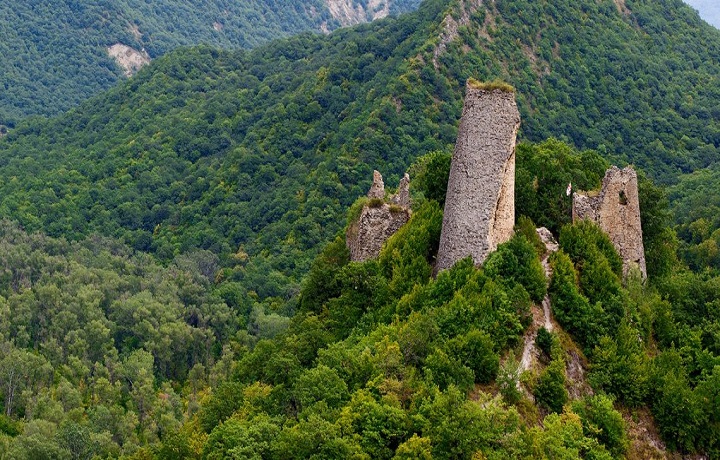


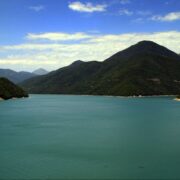


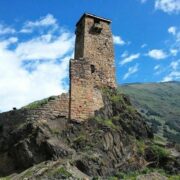



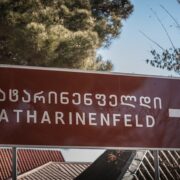

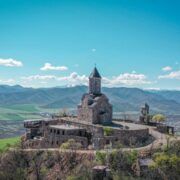
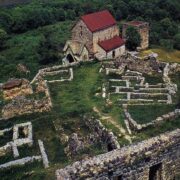


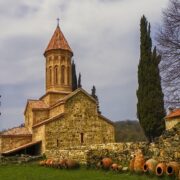



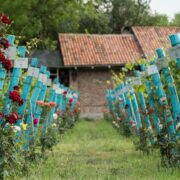




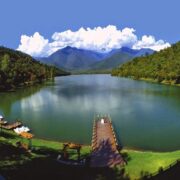







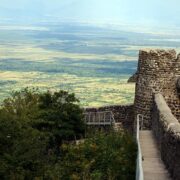



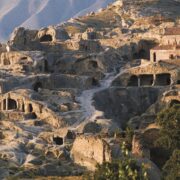
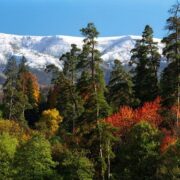

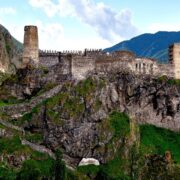

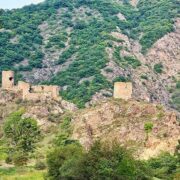



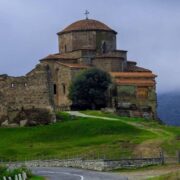





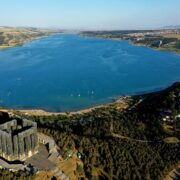

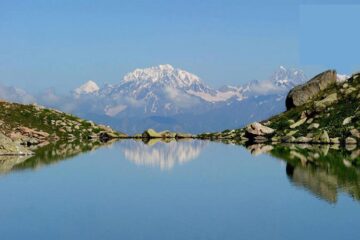
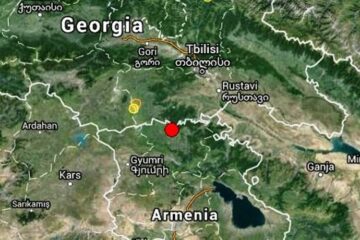
Tour Reviews
There are no reviews yet
Leave a Review